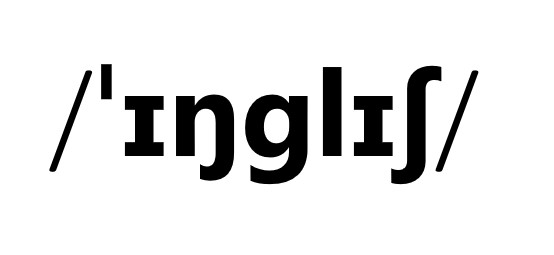Which consonants cause you the most trouble in speaking English? What sounds do you think particularly challenge other speakers of English as a foreign language? While many speakers have issues with the liquids ‚r‘ and ‚l‘, most Europeans complain about ‚th‘, as these sounds do not exist in most Indo-European languages. Here is a special pronunciation post just about how to approach that particularly difficult sound.
The letters th are typically used in Standard Englishes to represent two distinct sounds: voiced /ð/ and voiceless /θ/. As you will find from the basic introductions and table of consonants, they are dental fricatives, that is, they are pronounced using the tongue between the teeth and a kind of buzz or hiss. Non-native speakers (and, indeed, some non-standard speakers) may produce a variety of different sounds instead, ranging from fricatives /s/ and /z/ or even /f/ to plosive /d/. Sometimes listeners also hear the alveolar sounds rather than the dentals pronounced, in particular if they cannot view the speaker. The most important thing to remember if you want to produce the standard sound is to make sure your tongue is really between your teeth. Try it by looking in the mirror, if you cannot feel it.
One of the tricky things about th is knowing when you see it whether it is pronounced as /ð/ or /θ/. Unfortunately there seems to be no reliable system for figuring this out. Still, the vast majority of words in English with th have /θ/, and almost all newly created words do. However, the constant recurrence of the function words, particularly the, means that /ð/ is nevertheless more frequent in actual use. The distribution pattern may be summed up in the following rule of thumb, which is valid in most cases: in an initial position, /θ/ is used (theory, theater) except in certain function words (the, there); in the middle of the word, /ð/ is used (either, weather) except for certain foreign loan words (athlete, sympathy) and some native exceptions (wealthy, earthy); and at the end of a word, /θ/ is used (forth, heath) except in certain words (often indicated with a final -the: bathe, lithe). If you really want it, you can find a more detailed list of rules and exceptions at Wikipedia. However, most of the time it is enough to look up the word you are looking at if you are uncertain.
Th appears even more complicated in complex combinations of consonants. Because /s/ and /z/ are also fricatives, they cause the most trouble. Imagine trying to pronounce them together, with your tongue both behind and between your teeth. Thus, you will be pleased to hear that for the most part, /ð/ or /θ/ are largely dropped or assimilated. Here are a few examples and the solutions found by native speakers trying to avoid that difficult combination of sounds, including that classic especially difficult word: clothes.
three thousandths
six months
The Sixth Sense
The Smiths
is this
clothes
/θri θaʊzᵻndzs/
/sɪks mʌnths/
/ðə sɪksθsɛns/
/ðə smɪs/
/ɪzɪs/
/kloʊz/
Do you still find /ð/ and /θ/ difficult to distinguish, understand or pronounce? Here are some useful exercises (more coming!) to help out with these tricky sounds.


